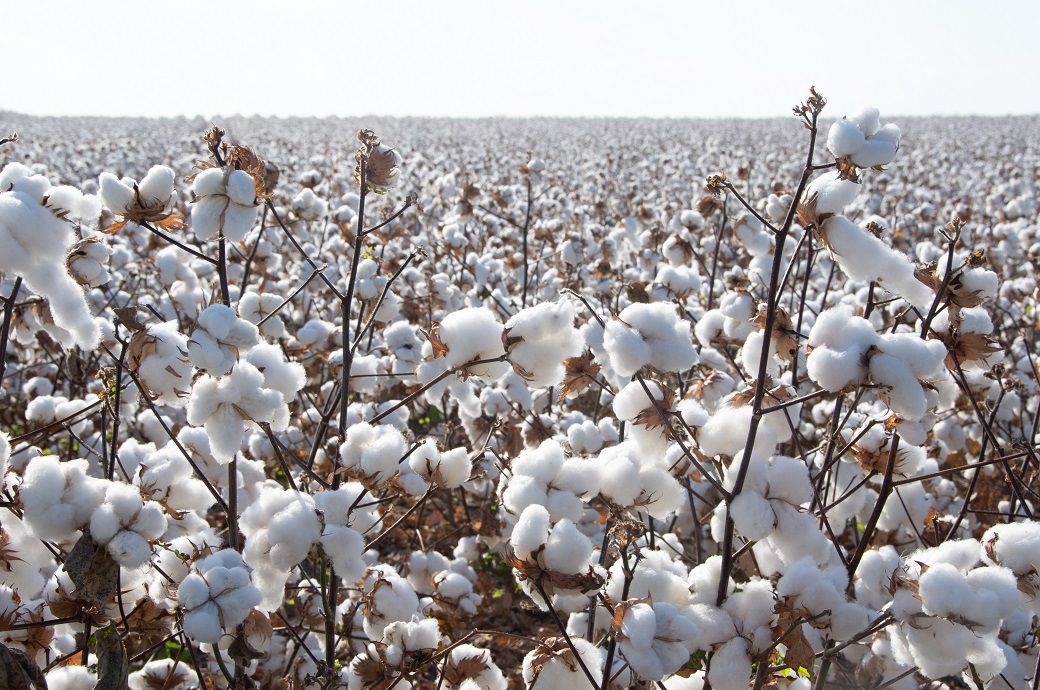
Yesterday (July 7), the first new US tariffs were announced—which include 40 per cent for Myanmar and Laos, 36 per cent for Cambodia and Thailand, 35 per cent for Bangladesh, and 25 per cent for Japan, Malaysia, South Korea and Tunisia.
Over the last few weeks, India’s negotiators have been hard at work to finalise a deal, with cotton an important component of trade for both countries—India as the leading cotton producer and the USA as the fibre’s leading exporter.
Cotton is central
India is the world’s largest cotton producer by volume, harvesting around 5.5-6 million metric tons annually, and unlike the US, consumes a large portion of its cotton domestically due to its extensive textile and apparel industry, which is a cornerstone of the country’s economy.
India is also a significant exporter of raw cotton, yarns and textiles to key garment manufacturing countries including Bangladesh, China and Vietnam.
The United States is meanwhile the world’s largest cotton exporter, producing around 4-5 million metric tons annually. Its highly mechanised and efficient farming practices allow it to maintain consistent quality and supply, with major export markets also including Bangladesh, China and Vietnam, as well as Türkiye. Over 80 per cent of US cotton is exported, driven by strong demand from Asia’s textile manufacturing hubs.
Complementary and competitive
Trade relations between India and the US in respect of cotton have so far been both complementary and competitive. While the US exports raw cotton to India—especially when domestic production in India falls short or prices are favourable—India exports value-added cotton products such as yarn, fabrics and garments to the US as a major consumer market.
In recent years, geopolitical shifts, climate variability, and changes in trade policies—especially tariffs and subsidies—have influenced cotton trade flows.
With the US now threatening a ‘reciprocal’ tariff rate rise to 26 per cent from the current 10 per cent on Indian products exported to the US, agriculture is reported to be proving a sticking point in negotiations.
India-US farm trade remains modest at around $8 billion annually, with India exporting rice, shrimp and spices, and the US nuts, apples and lentils.
As trade talks progress, however, Washington is looking to achieve bigger exports from its farms to India, including maize, soya bean and corn, as well as cotton, to help narrow its $45 billion trade deficit with India.
Meanwhile, last week President Trump signed ‘One Big Beautiful Bill’ (OBBB), after the sweeping legislation was passed by the Congress and the Senate earlier. The bill includes protections for two million US family farms by ending so-called ‘double taxation’, and has received praise from several key industry groups. The US National Cotton Council (NCC) applauded its passage, highlighting the importance of the bill’s agricultural provisions in supporting US cotton producers and the broader farming community.
“This legislation represents a significant step forward for cotton producers, the cotton supply chain and the broader agricultural community, providing vital support to help us continue to provide the world with the highest quality fibre while navigating ongoing challenges,” said NCC chairman Patrick Johnson.
Experts believe tariff concessions could now pressure India to weaken its minimum support prices (MSP) and public procurement—key protections that shield farmers from price crashes by guaranteeing fair prices and stable crop purchases.
Cotton is politically and economically sensitive in India, since agriculture impacts over 700 million people in the country’s rural economy. There are also other sticking points, such as auto components and tariffs on Indian steel, but negotiators remain optimistic that a mutually beneficial deal can still be achieved.
“There are two real challenges to concluding an initial agreement,” Richard Rossow, who tracks India’s economy at Washington’s Center for Strategic and International Studies, told the BBC. “First on the list is US access to the Indian market for basic agriculture products. India will need to protect its basic agriculture sector for economic and political reasons. For years, Washington has pushed for greater access to India’s farm sector, seeing it as a major untapped market, but India has fiercely protected it, citing food security, livelihoods and the interests of millions of small farmers.”
ALCHEMPro News Desk (AW)
Receive daily prices and market insights straight to your inbox. Subscribe to AlchemPro Weekly!